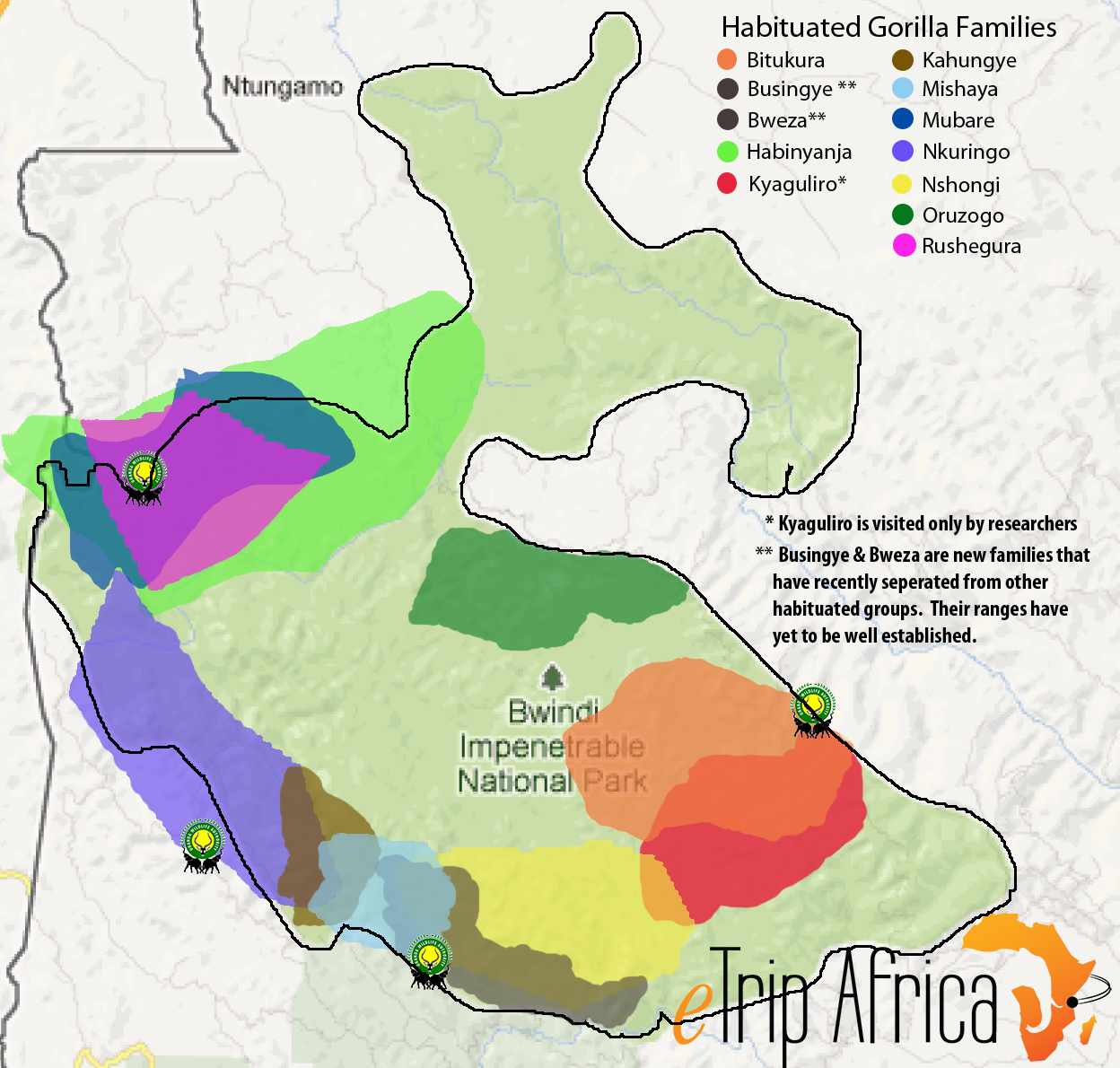UC Davis PhD Student Conducts Research in Bwindi
Source: Dr. Fred, Gorilla Doctors
Published: March 1, 2013
A visit to Bweza group in Bwindi Impenetrable National Park with Dr. Fred and PhD student Tierra Smiley Evans turned into a nine-hour strenuous trek in the pouring rain. But early afternoon, the sun burst through the clouds and we finally found the group, deep in a densely vegetated ravine, busy feeding and playing with one another. Dr. Smiley Evans immediately set to work inspecting the gorillas’ recent feeding sites for plant material that had been partially munched on by the great apes.
For the next five months, Dr. Smiley Evans will continue to collect non-invasive saliva samples from every habituated group in Uganda (and also tissues from pathology case lesions) to test for herpesviruses for her PhD in wildlife epidemiology at the University of California Davis. With a Bachelors in Science and Studio Art from Santa Clara University, and a Doctor of Veterinary Medicine and Post-graduate Certificate in International Veterinary Medicine from Tufts University, Smiley Evans is herself a veterinarian. Paired with Dr. Fred for the majority of her fieldwork, and considering Dr. Fred’s keen interest in plant species and food sources for mountain gorillas in Bwindi, the two make a perfect team for her PhD research.
Mountain gorillas are particularly susceptible to human pathogens due to their close genetic relationship with and frequent proximity to humans. Several free-ranging mountain gorilla groups in the Virungas have shown recurring oral and facial lesions. These symptoms have not yet been diagnosed and are of concern for the free-ranging population of mountain gorillas for various reasons. Diagnosis is also important in regards to understanding what pathogens exist in the free-ranging population compared to what is circulating among orphan mountain gorillas who may be considered for reintroduction in the future.
“I am using a non-invasive saliva collection technique to detect pathogens, using discarded forage food in the forest” says Dr. Smiley Evans. A scalpel is used to cut off the end piece of chewed plant material and it is stored in viral transport media. The sample is then vortexed and a pipette is used to collect fluid for testing. “This method will be used in conjunction with opportunistically collected invasive mountain gorilla and golden monkey samples to investigate the epidemiology of herpesviruses circulating in the wild populations of mountain gorillas.”
So, why saliva? In recent research, it has become clear that not all viruses can be easily detected in feces or urine. However, viruses such as measles, ebola, herpes and tuberculosis have shown up in human oral tests. In addition, discarded forage food is widely available from mountain gorillas and identifying the individual gorilla who produced the sample is much easier than with other sample types.
In 2008, a preemptory study was conducted to determine the effectiveness of saliva testing in mountain gorillas. During this study, discarded forage food was collected from free-ranging mountain gorillas and salivary alpha-amylase and gorilla DNA was consistently recovered. Additionally, dental ropes were given to the confiscated orphans in Kinigi. After the gorillas chewed on the rope, an average of 200 ul of saliva was collected off of each dental rope and they were able to successfully detect gorilla DNA in those samples. A study was then conducted at UC Davis on 23 rhesus macaques to determine the effectiveness of saliva sampling, where dental ropes were compared with oral swab samples. Then, forage food techniques in captive western lowland gorillas were tested. Next, a similar technique was implemented in a free ranging population of 22 baboons. Childrens oral swabs were hidden in a banana and given to each baboon. The baboons would then eat the banana and spit out the swab. An average of 800 ul of saliva was collected from these swabs - more than enough to test. Only the discarded forage food technique will be applicable to free-ranging mountain gorillas however, though improving sampling of other primate species through the distribution of dental ropes and children’s swabs could help better describe the epidemiology of certain viruses in the region.





